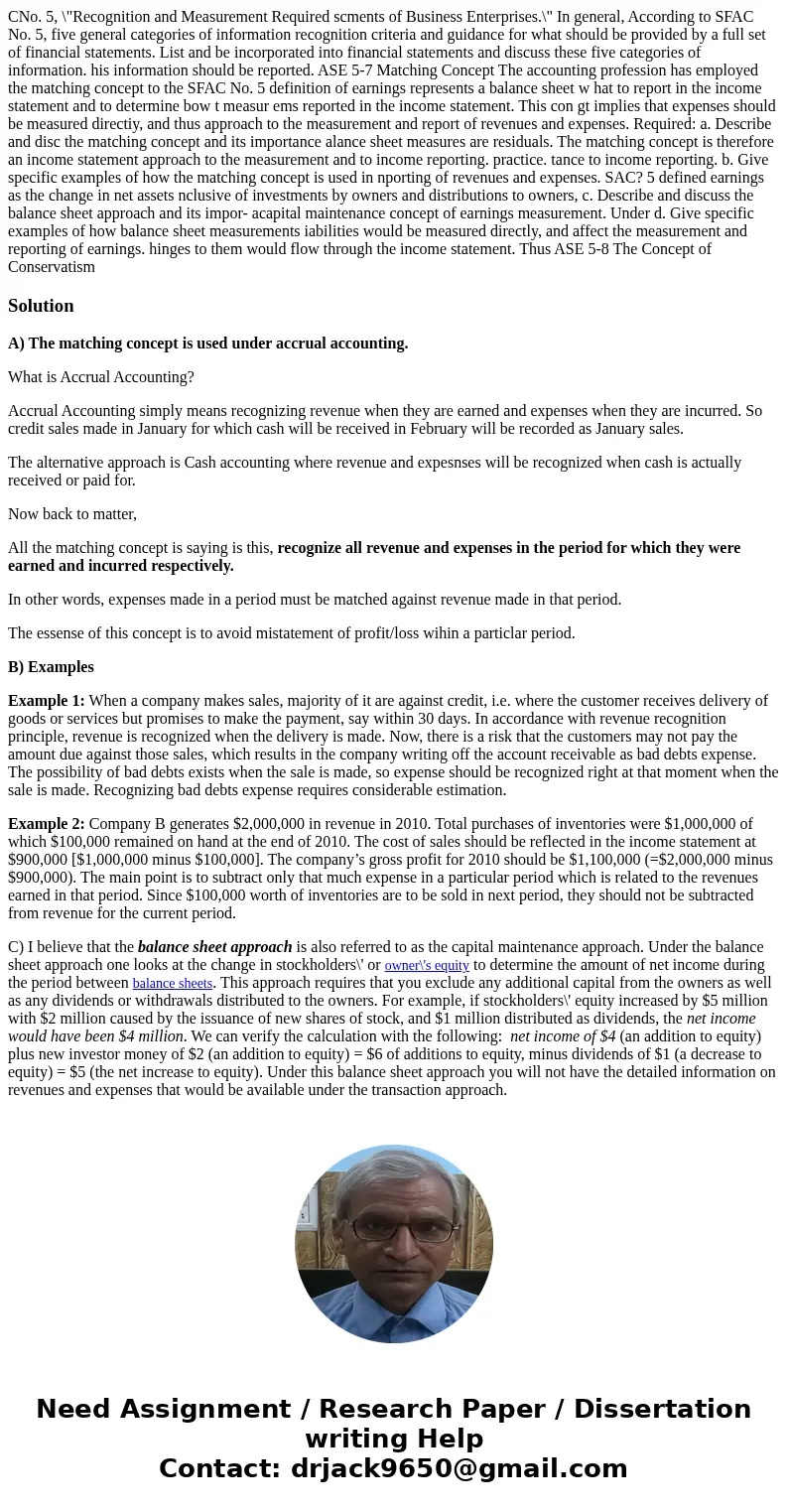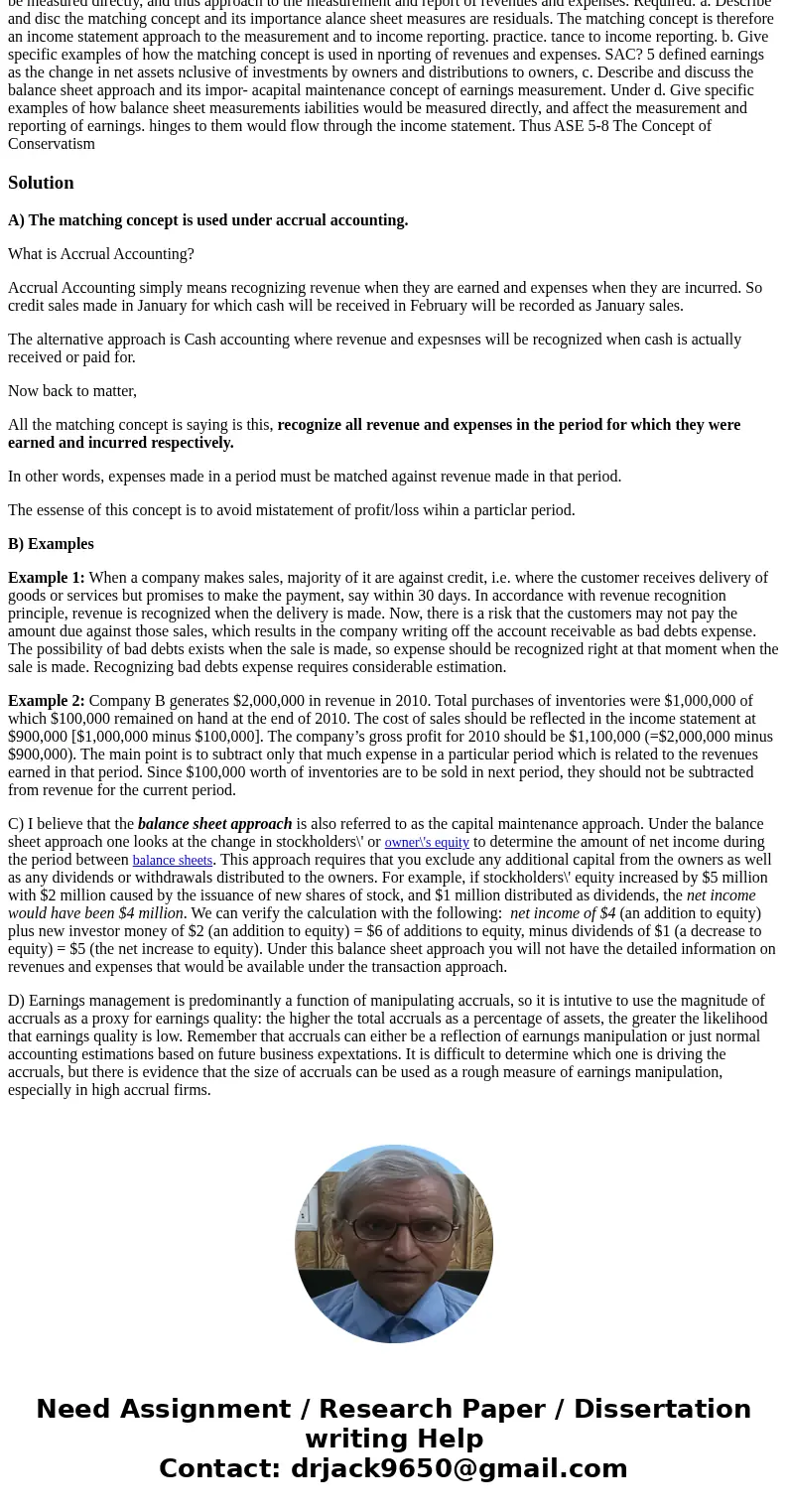CNo 5 Recognition and Measurement Required scments of Busine
Solution
A) The matching concept is used under accrual accounting.
What is Accrual Accounting?
Accrual Accounting simply means recognizing revenue when they are earned and expenses when they are incurred. So credit sales made in January for which cash will be received in February will be recorded as January sales.
The alternative approach is Cash accounting where revenue and expesnses will be recognized when cash is actually received or paid for.
Now back to matter,
All the matching concept is saying is this, recognize all revenue and expenses in the period for which they were earned and incurred respectively.
In other words, expenses made in a period must be matched against revenue made in that period.
The essense of this concept is to avoid mistatement of profit/loss wihin a particlar period.
B) Examples
Example 1: When a company makes sales, majority of it are against credit, i.e. where the customer receives delivery of goods or services but promises to make the payment, say within 30 days. In accordance with revenue recognition principle, revenue is recognized when the delivery is made. Now, there is a risk that the customers may not pay the amount due against those sales, which results in the company writing off the account receivable as bad debts expense. The possibility of bad debts exists when the sale is made, so expense should be recognized right at that moment when the sale is made. Recognizing bad debts expense requires considerable estimation.
Example 2: Company B generates $2,000,000 in revenue in 2010. Total purchases of inventories were $1,000,000 of which $100,000 remained on hand at the end of 2010. The cost of sales should be reflected in the income statement at $900,000 [$1,000,000 minus $100,000]. The company’s gross profit for 2010 should be $1,100,000 (=$2,000,000 minus $900,000). The main point is to subtract only that much expense in a particular period which is related to the revenues earned in that period. Since $100,000 worth of inventories are to be sold in next period, they should not be subtracted from revenue for the current period.
C) I believe that the balance sheet approach is also referred to as the capital maintenance approach. Under the balance sheet approach one looks at the change in stockholders\' or owner\'s equity to determine the amount of net income during the period between balance sheets. This approach requires that you exclude any additional capital from the owners as well as any dividends or withdrawals distributed to the owners. For example, if stockholders\' equity increased by $5 million with $2 million caused by the issuance of new shares of stock, and $1 million distributed as dividends, the net income would have been $4 million. We can verify the calculation with the following: net income of $4 (an addition to equity) plus new investor money of $2 (an addition to equity) = $6 of additions to equity, minus dividends of $1 (a decrease to equity) = $5 (the net increase to equity). Under this balance sheet approach you will not have the detailed information on revenues and expenses that would be available under the transaction approach.
D) Earnings management is predominantly a function of manipulating accruals, so it is intutive to use the magnitude of accruals as a proxy for earnings quality: the higher the total accruals as a percentage of assets, the greater the likelihood that earnings quality is low. Remember that accruals can either be a reflection of earnungs manipulation or just normal accounting estimations based on future business expextations. It is difficult to determine which one is driving the accruals, but there is evidence that the size of accruals can be used as a rough measure of earnings manipulation, especially in high accrual firms.


 Homework Sourse
Homework Sourse